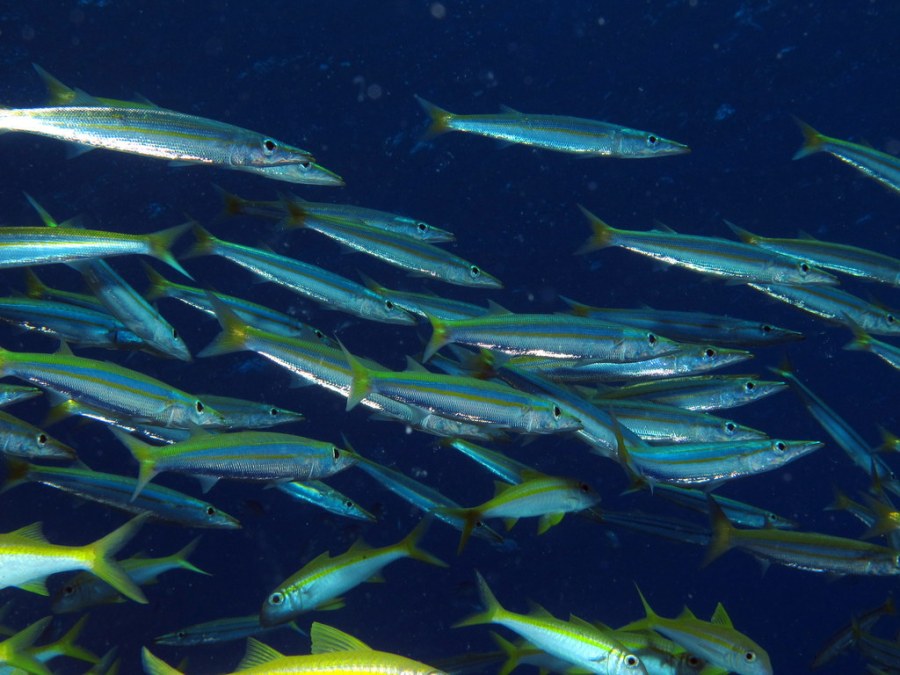How Do Betta Fish Get Pregnant Updated
How Do Betta Fish Get Pregnant

There are dissimilar stages of a young fish's life. They are referred to past many names throughout the first years of their survival. Depending on the species volition determine what stages and names a baby fish are referenced by. This can include egg, yolk-sac larvae, fry, and juvenile earlier reaching maturity.
Reproduction
In that location are three ways for a fish to reproduce. This is either through livebearing, which is similar to the manner humans and other mammals produce their immature, spawning, or self-bearing.
Spawning is the process when the female person fish releases her eggs. The eggs are either deposited directly into the water, where they float effectually, or into a nest. This depends on the blazon of fish species. The male person fish will so fertilize the eggs with milt that they release. Not all eggs that are laid volition be fertilized. Depending on the species of fish, the fish volition spawn every twelvemonth, every four years or only one time in their lifetime before dying.
Some fish can switch genders. This allows them to complete the entire process of reproduction themselves. This process is also known every bit self-bearing.
Eggs
Fertilized eggs hatch in two to viii days, depending on the species of fish. The majority of eggs don't reach maturity due to the dissimilar threats they face up. Some of these threats include the change in water temperature that tin occur due to the changing seasons during spawning. Oxygen levels irresolute in the h2o is another common threat to fertilized fish eggs. Flooding and sedimentation that acquit the eggs to unhealthy areas or crusade them to get landlocked will prevent the egg from hatching. Predators and illness are a constant threat to fish at all stages of their lifecycle.
Larvae
The larvae stage for a babe fish begins nine to 18 days afterwards the egg has hatched. This is also called the yolk-sac phase as the yolk-sac stays attached to the baby fish in one case it is hatched. This yolk-sac provides the young fish with the nutrients information technology needs to grow inside its environment. Some species of fish, such as the catfish, practise non go through this phase.
The larvae stage of the baby fish's life lasts one to two weeks. During this time, it feeds off the yolk-sac while staying at the bottom of the water. When in the larvae phase, many species of fish tend to settle within the plants and other caverns at the bottom of the h2o for protection. This helps them alloy in and hide from predators every bit they don't have fins for pond and are classified equally free floaters.
Fry
As a fry, a young fish still has its yolk-sac attached, but it begins to diminish in size. The fry stage lasts for two to five days for most types of fish. The fry will stay at the bottom of the h2o during this time. However, information technology does begin to explore its new environment, coming out of hiding for curt periods of time. Near of a fry's nutrition comes from the remaining yolk-sac, but it will brainstorm feeding on food lying at the bottom of the water's bed.
Juvenile
Equally with each stage of a fish's life cycle, the amount of time the baby fish remains a juvenile depends on its species. This phase may last up to three years. The juvenile fish begins to develop its fins, and their gills mature throughout this phase. Juvenile fish are not able to reproduce. The beginning of the juvenile stage is crucial to the fish'southward survival, as it must learn how to survive among its predators, find enough food to survive and gain its independence in all other aspects.
How Do Betta Fish Get Pregnant
Posted by: yokostogut.blogspot.com
0 Response to "How Do Betta Fish Get Pregnant Updated"
Post a Comment